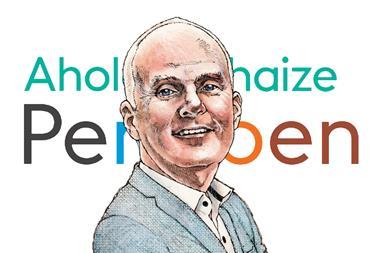Germany’s private equity (PE) market is showing dynamic growth again. The segment has digested the ups and downs of the ‘new economy’ exaggerations in both directions. The volume of capital invested is settling back onto its long-term growth path.
A total of almost E3.8bn was invested in private equity in 2004, a good 58% more than in 2003. We estimate that the pace of growth is slowing. Still, investment will increase further to more than E4bn in 2005. The historic highs of 2000 and 2001 (nearly E4.5bn in each year) will be approached.
The importance of buy-outs has grown considerably in Germany, as in the rest of Europe. At E2.7 bn German buy-out investments represent the lion’s share (71%) of all PE investments, ie, 55% up on 2004 (E1.7 bn). This is typical of Europe as a whole. In Europe E18.5bn was invested in buy-outs in 2003. That is up nearly 9% on the year-earlier and nearly 65% of all PE investment. We expect that this share continued rising towards 70% in 2004 and will continue to do so in 2005. Over three-quarters of the funds raised in 2004 were already earmarked for buy-outs.
In the buy-out market there is a major difference between the volume of equity investments by PE firms and the value of the deals that have been transactions executed as. The number and volumes of these deals have risen considerably in Germany. While the value of announced buy-outs in Germany was just E6.9 bn in 2001, the figure rose to E22.6bn in 2004. We expect a further increase to E30 bn in 2005.
The value of buy-out transactions is so much higher than the volume of PE investments because foreign - US in particular - PE firms are also dominant in Europe without necessarily being recorded in the national industry association’s statistics. Even more important, the very high debt portion of the buy-out deals is not logged in the statistics, only the capital invested by the PE fund is recorded.
The dynamic growth of the German PE market cannot hide the fact that this market is still relatively weak in structural terms. The standing of the private equity market differs considerably from country to country in Europe. The UK is by far the biggest and most dynamic PE market in Europe. Britain’s market share of European private equity investment increased by nearly 9 percentage points in 2003, to 46.5%.
Traditionally, equity financing has always been of greater significance in the Anglo-American environment than in continental Europe. This applies to both listed and unlisted stakes. PE investment in the UK amounts to almost 0.9% of GDP. None of the other European states posts a reading of even 0.4%. Trailing far behind the UK come the booming Scandinavian countries Sweden and Finland with the next largest national PE markets relative to GDP. Germany ranks eleventh with a market of a mere 0.1% of GDP, making it the poorest performer in the group of big European nations.
At present, Germany attracts a relatively large number of foreign PE firms that finance the major takeovers. Competition in the global markets raises the consolidation pressures especially in the mature sectors of the industrial economies. Large companies that are not listed on the stock market will be compelled to raise large sums of capital to shoulder the restructuring process. Germany in particular is attractive for the following reasons:
q Germany Inc is being unwound. The big companies are disposing of their non-core activities. Until a strategic investor appears or as long as restructuring is needed, PE firms can keep the relevant businesses running and bring them up to scratch;
q While the private equity market in the US is mature and competitive, there are still some treasures for the US private equity firms to unearth in continental Europe. German companies with their high-quality products and skilled staff can still generate considerable improvements thanks to the know-how of PE managers;
q German SMEs appear particularly attractive. Their notorious undercapitalisation can be significantly alleviated by the injection of equity capital. Greater capital resources in turn will enable SMEs to borrow at more favourable terms. The future capital adequacy rules for the banking industry (Basel II) lay down firm provisions for this relationship between capital ratio and credit rating;
q Finally, PE companies can function as buyers of family firms without a successor when the firm is to be passed on from one generation to the next. All the same, family firms in particular still hesitate to allow financial investors to look at their books and cede control of their life’s work.
Still, Germany itself has virtually no domestic players involved in the major transactions. Anglo-American PE companies are the main executors instead. Above all this is because the US private equity firms not only have the financial clout (pension funds, foundations) but also the track record required for both the fundraising
and the winning of mandates. Newcomers, by contrast – and not only domestic ones – find it difficult to force their way into the market. The few German institutions whose financial muscle and reputation would give them a real chance of penetrating the market are currently busy
getting their own houses in order or do not want to take PE on as another core activity for strategic reasons.
Financing needs are indeed high in the European buy-out business. The old economy sectors such as chemicals, real estate, automobiles and consumer-related areas rule the roost. The dynamic growth and the high volumes can therefore be explained by fundamental reasons on the macroeconomic level. Critics, however, have started to point to the risk of speculative overshooting with microeconomic arguments:
q Prices are skyrocketing owing to the stiff competition between bidders. The prices currently being paid for stakes are high, atsix to seven times earnings before interest, taxes, depreciation and amortisation (EBITDA). In the late 1990s, however, EBITDA multiples were even higher at more than eight;
q In leveraged buy-outs, the PE houses sometimes borrow heavily to refinance their stakes. Banks can earn considerably higher margins on loans to private equity firms than with traditional corporate lending. In addition to the upfront fee of around 2% of the loan amount a risk premium (risk margin) of some 200-300 bps is charged;
q The relatively new phenomenon of secondary buy-outs, that is the selling-on of a stake to another financial investor, shows that selling stakes to strategic investors has in some cases become difficult;
q The high degree of leverage in the buy-outs suggests that caution is called for. Since 2002 the average equity share of buy-outs has fallen steadily from nearly 39% to almost 36%. There have even been equity ratios of under 20%. Similar figures have been recorded in the past, however.
While the strong demand for private equity is fundamentally justified on the aggregate level, some microeconomic indicators show signs of overheating. The German private equity market is thus going through a thrilling phase. The crucial question is whether the market can shift the cyclical upswing into a sustainable development. At the end of this year we will probably be much wiser.
Jürgen Schaaf is senior economist at Deutsche Bank Research (juergen.schaaf@db.com)












No comments yet